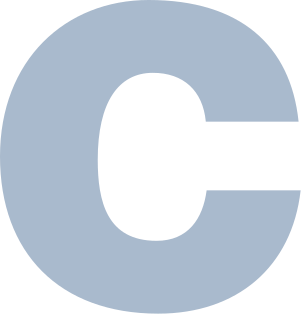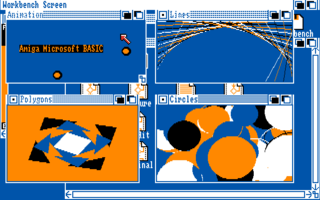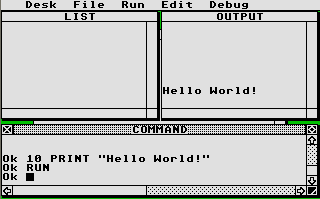| Paradigm | imperative (procedural), structured |
|---|---|
| Designed by | Chris Gray |
| First appeared | early 1980s, discontinued around 1990 |
| Typing discipline | static, strong, manifest |
| OS | CP/M, Amiga |
| License | copyrighted shareware |
| Filename extensions | .d .g |
| Influenced by | |
| ALGOL 68, Pascal, C | |
Draco was a shareware programming language created by Chris Gray. First developed for CP/M systems, Amiga version followed in 1987. [1]
Shareware is a type of proprietary software which is initially provided free of charge to users, who are allowed and encouraged to make and share copies of the program. Shareware is often offered as a download from a website or as a compact disc included with a magazine. Shareware is available with most computer software. Shareware differs from open-source software, in which the source code is available for anyone to inspect and alter; and freeware, which is software distributed at no cost to the user but without source code being made available.

A programming language is a formal language, which comprises a set of instructions that produce various kinds of output. Programming languages are used in computer programming to implement algorithms.

CP/M, originally standing for Control Program/Monitor and later Control Program for Microcomputers, is a mass-market operating system created in 1974 for Intel 8080/85-based microcomputers by Gary Kildall of Digital Research, Inc. Initially confined to single-tasking on 8-bit processors and no more than 64 kilobytes of memory, later versions of CP/M added multi-user variations and were migrated to 16-bit processors.
Although Draco, a blend of Pascal and C, [2] was well suited for general purpose programming, its uniqueness as a language was its main weak point. [3] Gray used Draco for the Amiga to create a port of Peter Langston's game Empire .
Pascal is an imperative and procedural programming language, which Niklaus Wirth designed in 1968–69 and published in 1970, as a small, efficient language intended to encourage good programming practices using structured programming and data structuring. It is named in honor of the French mathematician, philosopher and physicist Blaise Pascal.

C is a general-purpose, imperative computer programming language, supporting structured programming, lexical variable scope and recursion, while a static type system prevents many unintended operations. By design, C provides constructs that map efficiently to typical machine instructions, and it has therefore found lasting use in applications that were previously coded in assembly language. Such applications include operating systems, as well as various application software for computers ranging from supercomputers to embedded systems.
Peter Langston is a computer programmer who wrote and distributed for free several games for Unix systems in the 1970s, including one of the earliest text adventure video games Wander, the original version of Empire and the program "Oracle" upon which the later net-wide Oracle was modeled. He is also an experienced jazz, rock, and folk musician.






